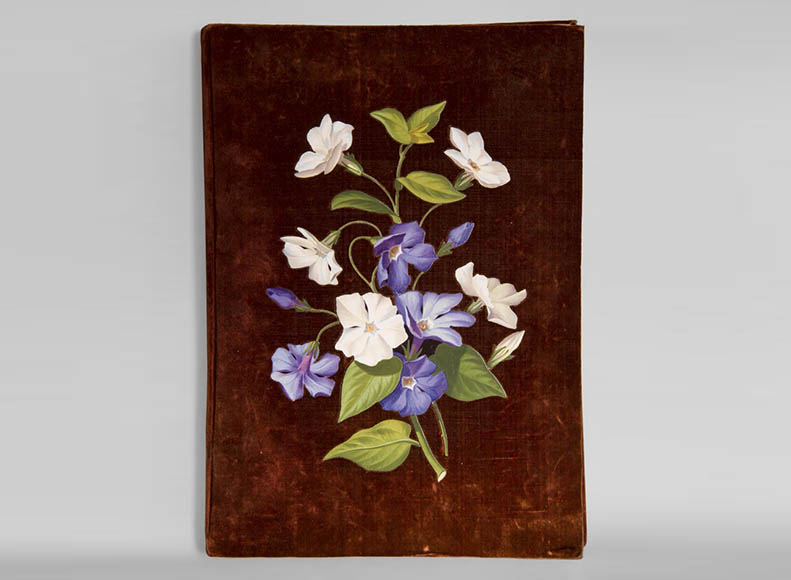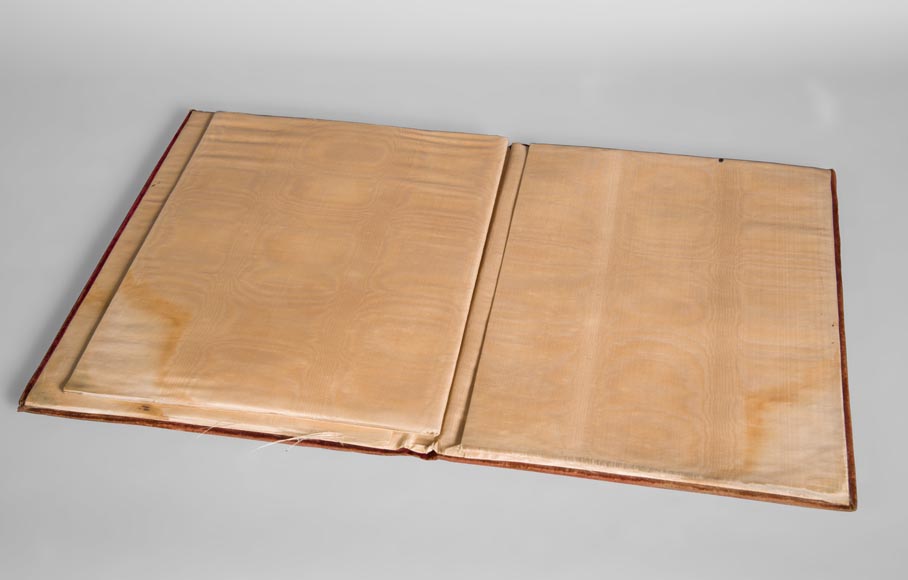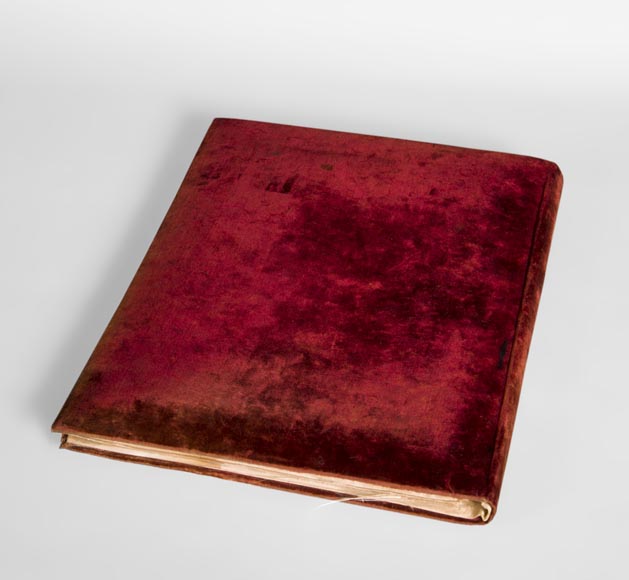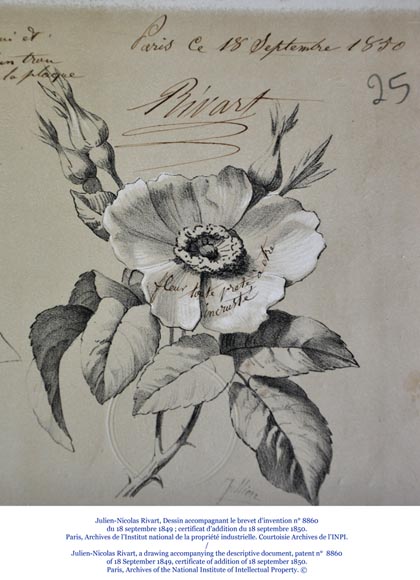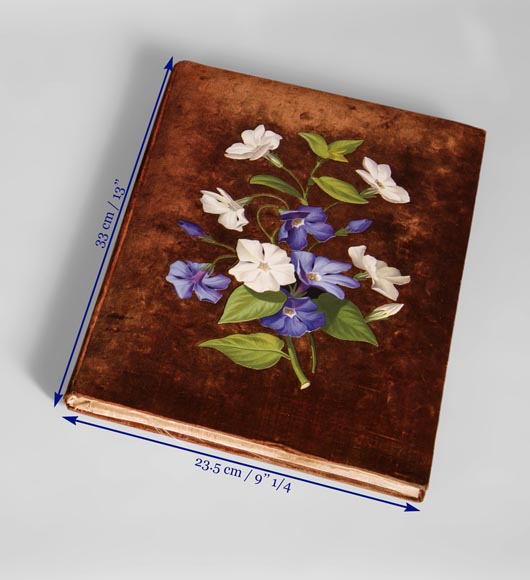Style Napoleon III / Ref.10722
Julien-Nicolas RIVART (1802-1867) - Velvet folder decorated with campanulas in porcelain marquetry
Dimensions
Width 9'' ½ 24cm
Height 13'' 33cm
Depth: 1'' ⅛ 3cm
Origin:
Between 1850 and 1867.
Status:
Brown velvet, porcelain marquetry. In good condition.
Covered in velvet, this folder has two compartments lined with moire fabrics and a matching file. It is decorated with a painted porcelain inlay by Julien-Nicolas Rivart , depicting twigs of campanulas. The brownish background contrasts with these purple and white wild flowers.
The velvet support enables the contrast with porcelain's delicate texture, and to enhance its gleam. This is a very rare type of inlay, Rivart 's porcelains being generally observed into wooden furniture. The latter foresees indeed in his patent to inlay in all types of materials, including cardboard, leather, or velvet; but very few of such works reached us through time. The folder we present is thus an exceptional example of inlays in velvet, a witness to a production much appreciated by the clientele, which at the time was described as "yet more beautiful than beautiful" (Auguste Luchet, The Industrial Art at the Exhibition of 1867).
According to the oral tradition of its former owners, this folder would have been the property of M. Boyer, the Steward of the Chateau of Fontainebleau, and offered by Empress Eugenie. Though it is not possible to confirm this source, it is however true that Eugenie de Montijo used to like the objects decorated with Rivart 's porcelains.
Indeed, Eugenie acquired in 1855 a sumptuous jewel case realized by Julien-Nicolas Rivart in collaboration with Charon Frères and the painter of flowers Guérou, whose signature is on it. This unique piece of furniture is still preserved in the National Museum of the Chateau of Compiègne.
Inspired by porcelain slabs inserted in panels, a fashion from 18th century, as well as Florentine mosaics in hard stones, Julien-Nicolas Rivart succeeded to develop an original technique, completely renewing the use of porcelain by inlaying it like a true marquetry, where each element is independent. Several times rewarded at the World's Fairs , Rivart porcelain inlays are particularly appreciated by critics both French and English. Rivart 's technique, "very ingenious", "delicious process", "one of the most important innovations for furniture decorations" is unanimously greeted for the charm its porcelain inlays release and the originality of the process. Patenting his invention in 1849, Rivart ensures a unique but rare production of furniture and small decorative elements of an extreme quality and a great sophistication, as this folder bears witness.
Informations
Price: on request
Recommended for you :
Dimensions:
Height: 25
Diameter: 11
Dimensions:
Height: 17
Diameter: 11
Dimensions:
Width: 45
Height: 25
Diameter: 45
Dimensions:
Diameter: 60
Dimensions:
Height: 36
Dimensions:
Height: 116
Diameter: 48
Dimensions:
Height: 113
Diameter: 58
Dimensions:
Width: 26
Height: 17
Depth: 15
Dimensions:
Height: 8
Diameter: 41
Dimensions:
Height: 56
Diameter: 24
Dimensions:
Height: 8
Diameter: 35
Dimensions:
Width: 35
Height: 34
Depth: 16



